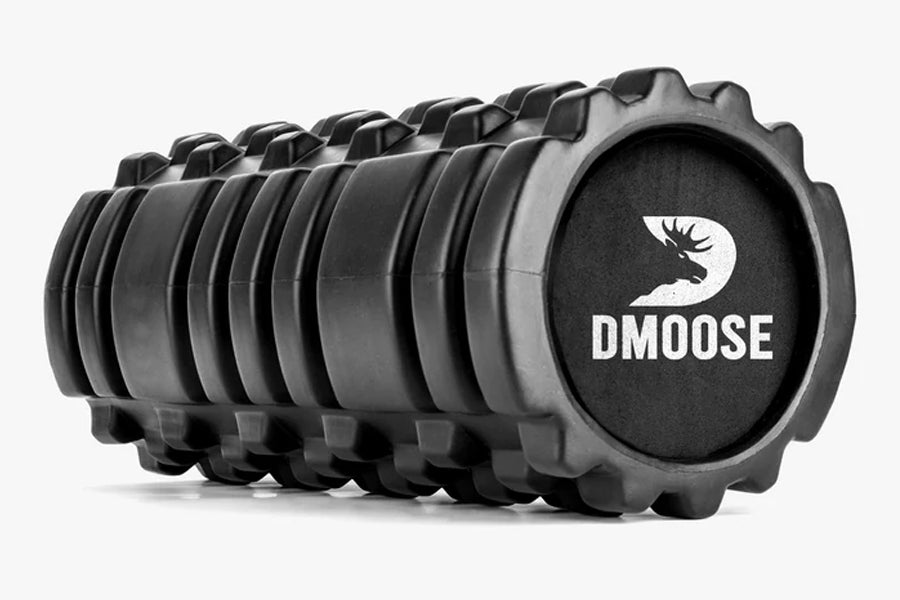Exercising without any break can have negative effects on your health. Rather than making you internally strong and healthy, a lack of rest can make you tired. With that, you will also feel a declined motivation to work out if you do not give yourself time to rest.
Just like you take out time to strengthen your muscles, you should also have some rest so that your muscles can recover. Not having a rest day in your exercise regimen can lead to overtraining syndrome resulting in disturbed sleep and decreased performance levels.
Physical exercises affect the muscle fibers in the body that often results in muscle soreness. It is necessary to follow a recovery routine to deal with that soreness.
The article will describe the science of muscle recovery and some tips that you can follow to recover your muscles from damage.
The Process of Muscle Growth
Skeletal muscle is one of the major muscle groups in the body. It has a role in regulating daily movements and working on balance and correct posture. When people are exercising, they increase their skeletal muscle mass.
Staying active helps in improving and increasing muscle mass. The right type of exercise and a balanced caloric diet has a direct influence on muscle growth.
In the human body, muscle growth occurs in three different mechanisms, according to research:
- By direct increase of muscle cell number
- By increasing muscle fiber diameter
- By changing the fiber length.

The first process of increasing muscle fiber only occurs when a human being is born. So, the aptest way to grow muscles involves hypertrophy of the existing muscle fibers. The term hypertrophy refers to an increase in the size of muscle fiber.
Another strategy to increase muscle mass is to add sarcomeres at the end of fibers to increase the length. Sarcomere is the basic contractile unit of muscle fibers.
Exercises such as resistance training cause immense pressure on muscles that damage myofibrils, resulting in a disturbed system in muscle fibers. The damage to the muscles then starts the process of muscle growth by adding more dimension and sarcomeres to the fibers.
The process of muscle growth is also dependent on the type of food that you are eating. The rate of muscle development is also influenced by age, sex, genetics, hormonal balance, and body types such as mesomorphic, ectomorphic, and endomorphic.
The Recovery Phase
The recovery phase of muscle development is a crucial step that determines the extent of muscle gain. In this phase, the body deals with the damage muscle have encountered. A post-workout routine has a major role to play in the recovery phase of muscle development.
The muscle fibers synthesize new myofibril protein, which then gets deposited into the fibers. The healing of fibers also occurs at this point. The healed fibers are stronger than before, which in turn adds strength to your muscles.
Muscle recovery is an important step of any exercise regimen. How fast you recover from muscle damage is highly influenced by the techniques you follow after your training. Everything is necessary to consider, from the food you eat to what you immediately do after exercise.
Practice correct techniques to amplify your muscle growth process.
Role of Recovery in Training Process
If a person skips the recovery session, dealing with muscle soreness might be difficult. Since recovery requires several essential tips such as hydration or eating protein, not doing it can significantly affect your muscle fibers. You might not be able to grow muscle mass if your fibers recover in a bad state.
Exercise affects multiple body processes such as damage to tissues, replenishing glycogen stores in muscles, a decreased level of ATP, and accumulation of by-products like lactic acid. It is necessary to give enough time and rest for a sufficient period to bring the body back to its original state.
The recovery period helps in improving the performance in the next exercise sessions. It also repairs your body muscles and makes them stronger. The chances of encountering any injury are also very less.
What Does Lack of Rest Do?
Exercising makes sure that your body is in a good state of health. It keeps you away from several diseases and improves the functioning of your body organs. It is an important component that assists in maintaining optimal health. However, with that, it is necessary to give your body rest from your exercise sessions.
The lack of rest might not affect your performance. Still, it will affect various biochemical markers such as heart rate (resting), blood lactate content, blood leukocyte count, plasma kinase, urea, and plasma glutamine. With that, overtraining will also affect your immune system function.
How Much Rest Do You Need?

The recovery rate of each individual varies. Everyone responds differently to the recovery periods. The type of fatigue, training level, and the ability to cope with stress are some of the important factors to consider while deciding on your recovery time.
Whether you want to rest between workouts or want to take a day off, the choice is yours.
A minimum rest of 24 hours is essential to recover your muscles from the damage. In high-intensity training sessions, some people might need 2 or 3 days to deal with muscle soreness.
A rest period between your workout sessions helps improve performance and maintain the energy in exercises, as suggested by research. The duration of rest is determined by the type of exercise you are performing.
Apart from giving time to your body to recover from damage, it is necessary to pay attention to some other recovery tips. Some of these include proper nutrition, healthy sleep, sufficient water intake, and stretching.
Tips to Recover Your Muscles
The following tips will help you in speeding up your process of muscle recovery:
Optimal Sleep
Having a proper sleep cycle ensures that you get the most out of your exercises. It has a major role to play in the regenerative process of muscles. The effect of the sleep cycle on muscle recovery shows that healthy sleep is a must so that skeletal muscle can repair itself.
Eat Right Protein
Protein intake has a major effect on muscle development. When your body has enough protein, the myofibrils work at a higher rate to add more muscle fibers, thus helping in increasing muscle mass. The protein intake after a workout or before plays a significant role in affecting performance and recovery rate.
Always Stay Hydrated
Your hydration status has a significant role to play in the recovery process. Exercising also affects your fluid level in the body. So, it is necessary to recover the damage after each session. If you are not adequately hydrated, your muscle recovery process will be very slow, thus affecting your performance.
Go for Massage

Massaging your muscles after exercises helps you in relieving stiffness in the body. It increases blood flow which works to speed up the muscle recovery process. You can use a foam roller to massage your body, and that too without anyone’s assistance.
Use Compression Garments

Using compression garments during exercise increases blood flow to different organs and tissues. You can also reduce the extent of muscle damage with the help of these garments. They also help in reducing the incidence of injuries and accidents during exercises.
Factors That Affect Recovery
You might get a different response from your recovery sessions as the following factors have a major effect on it:
Duration of Exercises
The longer you exercise, the longer you will need to recover your muscles. There is a close connection between the duration of exercise and post-exercise oxygen consumption, which is increased uptake of oxygen. When you exercise for a longer time, your muscles encounter more damage, and so your recovery might be a bit delayed.
Types Of Exercises
High-intensity exercise sessions will require more time to recover the body. The phenomenon that underlies here is that your body accumulates more by-products during high-intensity workouts. So to bring the body back to its original state, it is necessary to give time.
Age And Sleep Schedule
When you get older, your body becomes weak from the inside. Hence, age has a prominent effect on your muscle recovery process. Likewise, your sleep schedule is important to consider when you do not recover your muscle properly even after following all tips. The body does half of its work when in a deep sleep, so you should monitor it.
Bottom Line
If your goal is to lift heavy weight so that your body can look good, then resting in between your training days should be a part of your exercise regimen. The body works best to build your muscle mass when you rest properly. Half of the work is done during the recovery period.
Make sure to follow a healthy workout routine followed by a rest schedule for better results. Without proper training and rest period, you might not get the results you want.
Eat at the right time, pay attention to your sleep, and set your training schedule to add rest days in between.
Article Sources
- Timón, Rafael, et al. “48-Hour Recovery of Biochemical Parameters and Physical Performance after Two Modalities of CrossFit Workouts.” Biology of Sport, vol. 36, no. 3, Sept. 2019, pp. 283–89. PubMed Central, https://doi.org/10.5114/biolsport.2019.85458.
- Pearson, A. M. “Muscle Growth and Exercise.” Critical Reviews in Food Science and Nutrition, vol. 29, no. 3, 1990, pp. 167–96. PubMed, https://doi.org/10.1080/10408399009527522.
- Schoenfeld, Brad J. “The Mechanisms of Muscle Hypertrophy and Their Application to Resistance Training.” Journal of Strength and Conditioning Research, vol. 24, no. 10, Oct. 2010, pp. 2857–72. PubMed, https://doi.org/10.1519/JSC.0b013e3181e840f3.
- Mansfield, Paul Jackson, and Donald A. Neumann. “Chapter 3 - Structure and Function of Skeletal Muscle.” Essentials of Kinesiology for the Physical Therapist Assistant (Third Edition), edited by Paul Jackson Mansfield and Donald A. Neumann, Mosby, 2019, pp. 34–49. ScienceDirect, https://doi.org/10.1016/B978-0-323-54498-6.00003-5.
- Fridén, J., and R. L. Lieber. “Structural and Mechanical Basis of Exercise-Induced Muscle Injury.” Medicine and Science in Sports and Exercise, vol. 24, no. 5, May 1992, pp. 521–30.
- Bishop, Phillip A; Jones, Eric; Woods, A Krista Recovery From Training: A Brief Review, Journal of Strength and Conditioning Research: May 2008 - Volume 22 - Issue 3 - p 1015-1024 doi: 10.1519/JSC.0b013e31816eb518
- Gleeson, Michael. “Biochemical and Immunological Markers of Over-Training.” Journal of Sports Science & Medicine, vol. 1, no. 2, June 2002, pp. 31–41.
- A Multidimensional Approach to Enhancing Recovery - ProQuest. https://www.proquest.com/openview/e06de5d2330f79a24bdec0565e9d3a3b/1?pq-origsite=gscholar&cbl=44253.
- Willardson, Jeffrey M PhD, CSCS A Brief Review: How Much Rest between Sets?, Strength and Conditioning Journal: June 2008 - Volume 30 - Issue 3 - p 44-50 doi: 10.1519/SSC.0b013e31817711a4
- Schwarz, P., et al. “Sleep Deprivation Impairs Functional Muscle Recovery Following Injury.” Sleep Medicine, vol. 14, Dec. 2013, p. e262. ScienceDirect, https://doi.org/10.1016/j.sleep.2013.11.638.
- Cintineo, Harry P., et al. “Effects of Protein Supplementation on Performance and Recovery in Resistance and Endurance Training.” Frontiers in Nutrition, vol. 5, 2018, p. 83. Frontiers, https://doi.org/10.3389/fnut.2018.00083.
- Weerapong, Pornratshanee, et al. “The Mechanisms of Massage and Effects on Performance, Muscle Recovery and Injury Prevention.” Sports Medicine, vol. 35, no. 3, Mar. 2005, pp. 235–56. Springer Link, https://doi.org/10.2165/00007256-200535030-00004.
- Børsheim, Elisabet, and Roald Bahr. “Effect of Exercise Intensity, Duration and Mode on Post-Exercise Oxygen Consumption.” Sports Medicine, vol. 33, no. 14, Dec. 2003, pp. 1037–60. Springer Link, https://doi.org/10.2165/00007256-200333140-00002.
- Fell, James, and Andrew Dafydd Williams. “The Effect of Aging on Skeletal-Muscle Recovery from Exercise: Possible Implications for Aging Athletes.” Journal of Aging and Physical Activity, vol. 16, no. 1, Jan. 2008, pp. 97–115. journals.humankinetics.com, https://doi.org/10.1123/japa.16.1.97.











